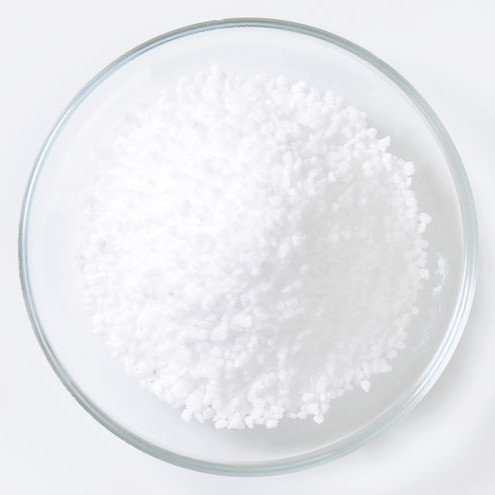Potassium Chloride
What is Potassium Chloride?
Potassium chloride, or KCl, is the most widely used table salt substitute that provides a salty taste without adding sodium. Its use in foods and bakery products has become a part of heart-healthy and reduced-sodium diets. It is either a:
- Odorless, white solid
- Nearly colorless crystalline powder
Origin
KCl is composed of a molecule of chlorine and a molecule of potassium. This salt naturally occurs in the mineral sylvite. However, KCl is produced via flotation or fractional crystallization of source minerals.
Function
Potassium chloride performs the following functions in food products:1
- Salt substitute
- Food for yeast
- Flavor enhancer
- Dietary supplement
- Flavoring agent
- Thickening and gelling agent (synergy with hydrocolloids, such as carrageenans)
- pH control
Commercial production
Potassium chloride is extracted from sylvite, carnallite and potash. It is also extracted from sea water and can be manufactured by crystallization from solution, flotation or electrostatic separation from various minerals.
Nutrition and health
Potassium chloride is often used to lower the risk of high blood pressure. It can also help with reducing bone degeneration and an aid for proper muscular and nerve functions. KCl is also used in dietary supplements and is claimed to counteract spasms or other muscular-related health issues.
According to FDA’s latest rule on nutrition labeling, vitamin D and potassium are now required on labels since deficiencies of these micronutrients represents a concern to public health.
Application
In foods, KCl is mainly used as a partial replacement for sodium chloride. However, as the overall level of sodium chloride falls in bread, sweet goods and salty snacks, so does the proportion of it that can be replaced with the potassium salt before the bitterness associated with the latter becomes evident.2
When replacing table salt with this ingredient, the sugar, acid, starch, and fat content must be adjusted to compensate for flavors and functional characteristics that might be diminished. One key aspect is that potassium chloride does not impart quite as great a flavor to baked products as salt.
Salt blends consisting of table salt and potassium chloride are available on the market. In such preparations, NaCl is partially replaced by about 30–40% with KCl. R&D teams must conduct careful sensory evaluation and consumer acceptance studies prior to launching sodium-reduced products into the market.
It does not have equivalent technological functionality as regular salt. Further research is needed to better understand the effect of potassium chloride on:3
- Gluten development
- Yeast inhibition (control of yeast activity)
- Control of water activity
FDA regulation
KCl holds a GRAS (generally recognized as safe) status in the United States. The formulation of products with KCl is unrestricted and follows the GMPs.
References
- Smith, J., and Hong-Shum, L. “Flavor Enhancers.”Food Additives Data Book, 2nd edition, Blackwell Publishing Ltd., 2011, pp. 508–510.
- Cauvain, S.P. “The Opportunities for Developing Improved Nutrition via Bakery Products.” Baking Technology and Nutrition. Towards a Healthier World, John Wiley & Sons Ltd, 2019, pp. 119–152.
- Mitchell, H.L. “Alternative ingredients to sodium chloride.” Reducing Salt in Foods, 2nd Edition, Woodhead Publishing, Elsevier Ltd., 2019, pp. 113–128.


